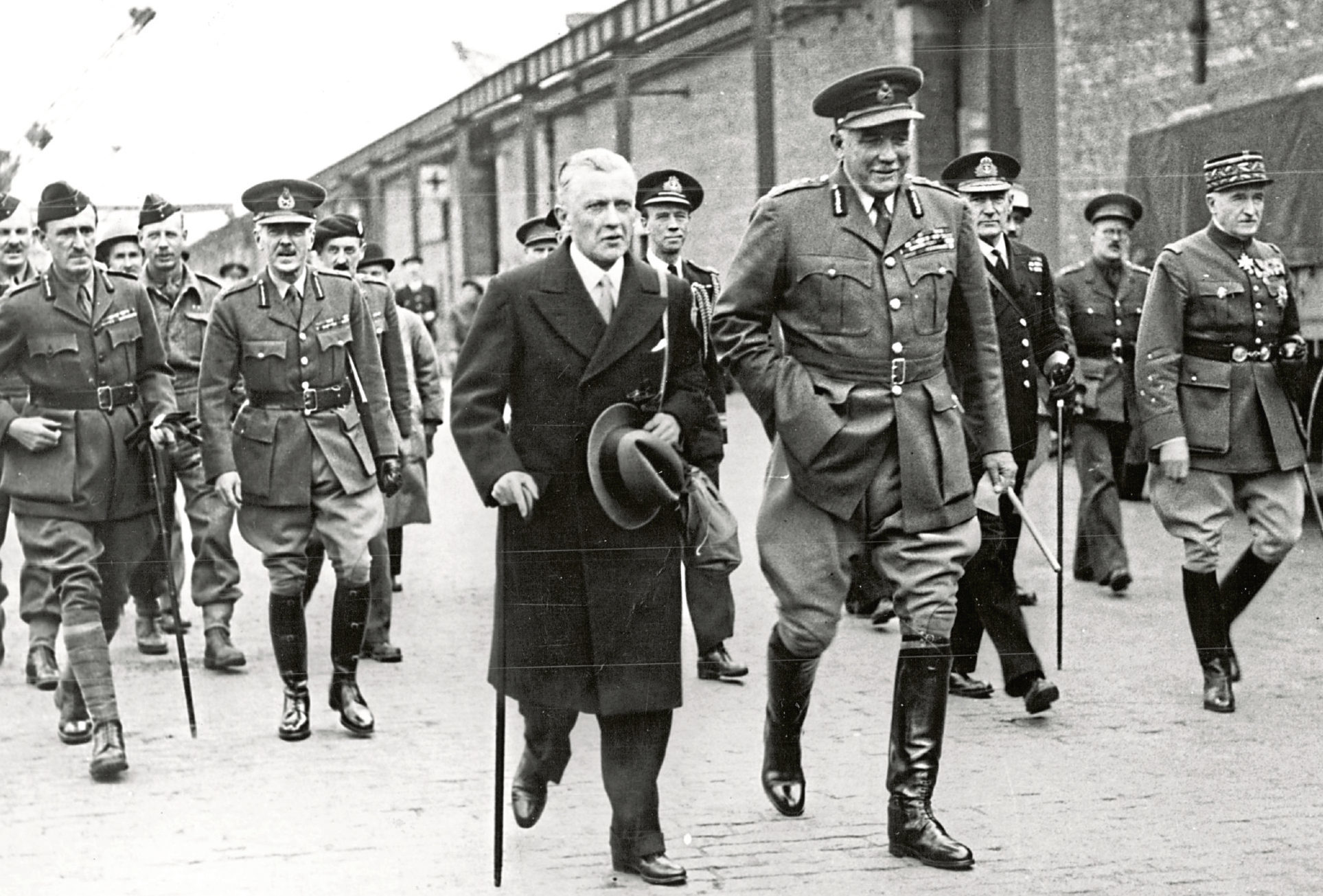
FIELD Marshal Lord Ironside was a major military figure, featuring in film Darkest Hour alongside his friend, Winston Churchill.
Son Edmund, who has used his father’s diaries for new biography Ironside, tells Bill Gibb the Honest Truth about the remarkable Scot.
What were his early days?
William Ironside was born on May 6 1880 at their home in Edinburgh, which was an apartment for military personnel. He went on to attend the Royal Military Academy, was commissioned as an officer and then mobilised the same day for the Boer War.
How did he get the nickname “Tiny”?
Army humour being what it was, he was nicknamed owing to his height – 6’4”. He was also referred to as The Tulip because he was tall and big-headed, which he took in good humour!
How did he end up as the inspiration for Richard Hannay in The 39 Steps?
Author John Buchan was working for the high commissioner in what is now Namibia, and wanted someone with knowledge of the local languages. He appointed Ironside as his interpreter because he spoke Afrikaans, had first-hand knowledge of the Boers – and also for his undercover work which was to prove such an influence.
Tell us about his First World War experiences?
Ironside was mentioned in dispatches six times during WWI and he finished his service at Passchendale before being appointed commander-in-chief of the Allied expedition to North Russia. He was in charge on the ground at Vimy Ridge in 1917, a famous Allied victory over the Germans. On one occasion in the trenches an American lady sent Ironside – via Prime Minister Lloyd George – a US dollar cheque to buy a gas mask for his dog Gibby, whose exploits had been reported in the US and Canadian newspapers.
What did he do between wars?
He was commander-in-chief of the Allied expedition to North Russia in September 1918, trying to sort out the Bolsheviks. He was involved in a plane crash in the early 1920s after attending the Cairo Conference with Winston Churchill which stopped him taking up the post of commander of British Forces in Iraq.
Instead, he became commandant at Camberley Staff College and was commissioned to write a report on modernising and mechanising the Army. Some say that if his recommendations had been heeded, things may have gone rather differently for the British Army in WWII.
How close were he and Churchill?
The relationship with Winston Churchill was long-standing. They met in the Boer War and Ironside was supposedly instrumental in arranging for Churchill to be released from prison.
They were at that Cairo peace conference in 1922 and their relationship endured right through to the end of WWII.
So yes, they were close and this is depicted in Darkest Hour, where “Tiny” is never far from Churchill’s side in scenes depicting the War Rooms.
And what about World War Two?
At the outbreak of war in 1939, he was immediately appointed as Chief of the Imperial General Staff, CIGS, and kept this position until after Dunkirk. Churchill said that, with the likelihood of an invasion by Germany thought imminent, he wanted him take on the important role of being in charge of defence. This was, of course, a demotion but Churchill said Ironside was the only man who could do it. He retired in 1941 as a field marshall and was created a hereditary peer.
Was he thought of as a success?
He was definitely seen as a huge success and a brilliant soldier although others may have been better at promoting their own public image. There was jealousy from other officers, but Ironside is commemorated in the Nelson Vault in St Paul’s Cathedral and there is a plaque commemorating his achievements on a stained glass window in the House of Lords.
Ironside, History Press, out now.

Enjoy the convenience of having The Sunday Post delivered as a digital ePaper straight to your smartphone, tablet or computer.
Subscribe for only £5.49 a month and enjoy all the benefits of the printed paper as a digital replica.
Subscribe